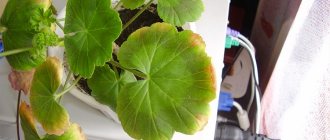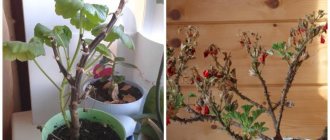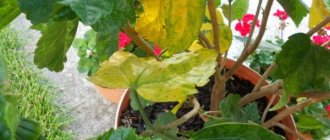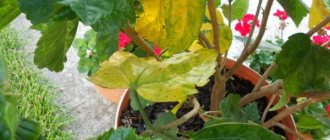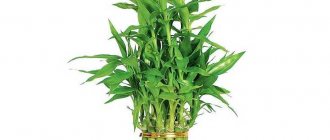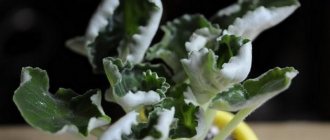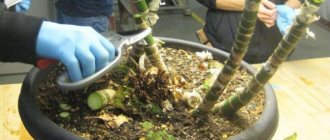Author: Galateya
25 October 2022 13:33
Community: Facts
Tags: geranium soil leaves yellowing watering why prevention temperature
39309
5
Even our grandmothers knew about the healing properties of this unpretentious plant. And bright multi-colored inflorescences help decorate the interior of modern apartments. But it happens that the flower suddenly begins to hurt. What to do when geranium leaves turn yellow and save the plant?
Natural processes
Indoor geranium is short-lived, after 2-5 years it becomes ugly, anti-aging pruning does not help. The owners can only root the cuttings and throw away the old bush with lignified thick shoots and yellow leaves, or leave it for the mother plant.
But even in young pelargoniums, the plates do not live indefinitely; they age, change color and fall off. If this happens gradually, only with the lower leaves, it’s okay. Most often, the bush loses its outdated plates in the fall, with the beginning of the dormant period.
You need to worry and think about what to do when geranium leaves turn yellow and dry en masse, not only at the base of the shoots, but also in the middle part, especially at the top.
Why do pelargoniums start to get sick more often?
Once upon a time, flowering geraniums were considered very healthy plants and resistant to all sorts of ailments. Probably the fact is that flower growers did not even try to understand why the leaves suddenly turned yellow or red, and the buds and flowers withered. They simply broke off a branch and grew a new healthy plant, and threw away the old one. Now pelargonium has become more expensive, both figuratively and literally. Flower lovers become attached to their pets and do not want to lose them. And varietal types of pelargonium are not so little worth throwing at them.
Pelargonium lovers try to cure their delicate pets if they are sick
At the same time, with the development of home floriculture, plants developed diseases that our grandmothers, who grew geraniums on the windowsill, did not even suspect. Oddly enough, progress is to blame. New varieties of pelargonium are very decorative; they bloom more brightly. And at the same time, they are more delicate and more easily infected with fungal or viral infections, and suffer more from care errors and metabolic diseases. Plant immunity has become much weaker. And fungi, viruses and pests are hardened, they mutate, adapting to modern drugs, and increase resistance. So it turns out that pelargonium lovers are forced to acquire special medicines and reference books to treat their flowers. But it is not all that bad. Pelargonium, which has been created in optimal conditions and is adequately cared for, will be healthy and certainly bloom.
Pelargonium will bloom with proper care
Video: all about the problems of caring for geraniums
Watering errors
Along with improper feeding, this is the most common cause of yellowing of geranium leaves. The culture is more afraid of waterlogging the substrate, but it still needs water, especially during the period of active growth, during flowering.
To check whether the geranium needs to be watered, just stick your index finger into the soil along the first phalanx. Only the tip should feel the moisture. If the substrate does not give in, it means that the plates have begun to turn yellow not because of overflow, but because the soil has become compacted and air is not reaching the roots.
Overdrying of the soil
Geranium leaves turn yellow when the bush receives little water. Plants are 95% liquid; without it, nutrition, photosynthesis, and thermoregulation are impossible.
When geraniums are compared to succulents, they mean that the bush cannot be overwatered. But the crop’s ability to extract water from the air is low. Without regular irrigation, pelargonium leaves sequentially:
- lose turgor;
- turn yellow;
- dry;
- crumble.
Since water is first spent on servicing the leaf apparatus, the flowers fall off prematurely and there are no new buds. At some stage the root dies.
If the owners notice that the leaves of the geranium are drying, and the substrate is also dry, the pot is light, the plant needs to be watered. And be sure to check whether the water wets the soil completely.
Perhaps the flower has dried out so much that liquid seeps through the cracks and immediately falls into the pan. In this case, watering is done by immersion - place the geranium in a bucket of water at room temperature until the earthen ball is saturated.
Overflow
Pelargonium suffers even more from waterlogging. The death of the plant occurs faster than from overdrying, since the root and base of the succulent stem rot.
The first signs are similar to drought - the leaves of pelargonium wither. When yellowing begins, it means that the root is already rotting, it’s too late to save the geranium, you need to take healthy shoots for rooting.
In the initial stages, you can distinguish overwatering from overdrying by simply feeling the surface of the soil. Yellowed leaves do not dry, but soften and rot.
If the soil is wet but the root is still healthy, dry the earthen lump on newspaper and then return it to the pot. At the same time, clean the drainage holes - perhaps they are clogged and excess liquid simply cannot drain into the pan.
Water quality
Geranium turns yellow when the flower is watered with hard water or the concentration of mineral fertilizers is exceeded. The earthen lump becomes salted, not only from above, but from all sides, becomes covered with a whitish crust, and permeability to air and water decreases.
If no action is taken, the leaves continue to turn yellow, the root suffers, and the flower may die. You need to remove the pelargonium from the pot, remove the outer layer of the substrate, and add fresh soil.
It should be taken into account that the salt content in water from a well or well may be higher than in water flowing from a tap. Before watering, the liquid is allowed to settle in an open container for at least a day, then removed from the sediment.
Low air humidity
Geranium needs only periodic irregular spraying. But in hot, dry summers and winters next to a radiator, you shouldn’t be surprised that the tips of the leaves dry out and the surface turns yellow.
Air humidity should be average, at least 50%. It should be increased not by regular spraying, but, for example, by placing bowls of water between pots with plants. In autumn or winter, you can put a wet terry towel on the battery.
If the air in the apartment is dry, spider mites are likely to appear.
How to save a flower, how to water it or feed it at home?
All of the above manipulations will help save geraniums from yellowed leaves. Also, negative changes in the state of the plant can be prevented. To do this, you just need to follow the rules for caring for your indoor beauty:
- water regularly and abundantly;
- provide the flower with an influx of fresh air;
- periodically apply fertilizers, but do not overdo it;
- after moistening the soil, it needs to be loosened;
- maintain the air temperature at 22-25 degrees above zero.
Also, as preventive measures, you can use watering with the following mineral elements:
- potassium - it is necessary for the rapid growth of the flower;
- phosphorus - ensures abundant flowering of geraniums;
- nitrogen - thanks to this element, the green mass of the plant will begin to grow more luxuriantly, its color will become richer.
Now you know what causes the leaf blades of geraniums to turn yellow. Try to avoid all negative factors. After all, it is easier to prevent all problems than to solve them later.
Incorrect feeding
A plant disease in which early yellowing and shedding of leaves is observed is called chlorosis. Reason: the formation of chlorophyll is disrupted (among other things, it is responsible for the green color), as a result - a decrease in photosynthesis.
Chlorosis is usually associated with a lack of nutrients. But, before you feed the geranium to prevent the leaves from turning yellow, you need to understand the causes of the disease. Perhaps the fertilizers are simply not absorbed.
External signs of battery shortage:
- nitrogen - the old plates are the first to change color, the shoots begin to stretch;
- iron – the tissues between the veins turn yellow;
- potassium - the vegetative organs dry out at the edges, straw spots appear in the center;
- calcium - the top is the first to suffer, young leaves not only turn yellow, but also become deformed;
- magnesium - on old plates, the edges first become covered with straw spots, then bend and die.
Fertilizers may not be absorbed, even if the substrate contains all the necessary elements. Before fertilizing the bush, you need to eliminate the causes of the problem:
- damage to the root system;
- soil that is too acidic or alkaline;
- poor substrate aeration;
- watering with chlorinated or unsettled water containing a lot of salts;
- exposure to sulfur dioxide, which often happens when geraniums are standing outside - the leaves will turn yellow after acid rain in environmentally unfavorable areas;
- Calcium deficiency occurs only with constant use of filtered water.
Leaves turn yellow if there is an imbalance of nutrients. This usually happens when gardeners do not use complex preparations, but give single-component ones to pelargoniums.
During the period of active growth, bushes need to be fertilized every 2 weeks. If the leaves of a geranium have turned yellow due to the fact that the owners regularly skip feeding the geranium, it is necessary to compensate for the nutritional deficiency.
Pelargonium is simultaneously watered with a solution of complex fertilizers at the root and the crown is treated. Macroelements are absorbed faster through the leaves, and the nutrients are even better. You cannot limit yourself to spraying - nutrients are also removed in a short time.
Another reason for yellowing of geranium leaves is that fertilizing is done with high concentration preparations or on dry soil. The root gets a chemical burn.
Flower growers constantly complain on forums that when feeding geraniums with Fitoverm, the bushes turn yellow. Especially many plates change color and fall off in the Royal Pelargonium.
What to do if geranium leaves turn yellow
If yellowing begins, you should promptly detect the cause and try to save the plant. It is recommended to follow several rules that will help restore pelargonium attractiveness and health:
- Flower transplant. Select the size of the pot taking into account the size of the pelargonium, provide the filling with high-quality drainage, and make holes for air intake.
- Transfer to another location. Important conditions include shading and avoidance of direct sunlight. You should also avoid places where the pot may be in a draft.
- Temperature level monitoring. It should not exceed +20 °C.
- Adjusting the humidity level. Dry air, especially in winter, when heating appliances are connected, can affect the appearance.
- Compliance with the rules of watering and fertilizing.
Problems with transplantation
For this reason, geranium leaves turn yellow, as well as due to improper watering or fertilizing. The consequences can be serious, including the death of the plant:
- During replanting, the underground part was damaged.
- Pelargonium is not moved to a new pot for a long time, the root takes up the entire volume, the lump becomes compacted, water and nutrients are less absorbed. The result is that the leaves turn yellow.
- Alkaline or too acidic soil. A dense substrate that does not allow air or water to pass through is not suitable for geraniums.
- Poorly chosen pot. If the container is small, the roots are crowded; in a large container, the plant stops growing and does not bloom until it has entwined a lump. “Free” soil turns sour when watered. The absence of lower holes usually leads to stagnation of water and rotting of the roots.
- After transplanting from a flowerbed to a pot, some of the leaves always die off.
- No drainage. Expanded clay at the bottom of the container not only prevents waterlogging, but also increases aeration.
The treatment is simple - you need to correct the mistakes and replant the pelargonium. The pot is 2-3 cm larger than before, with holes in the bottom. The soil is slightly acidic or neutral, light, permeable. Drainage is required.
Phytocontrol measures
It is easier to prevent a disease than to cure it; this principle of prevention also applies to plants. And her main rule is hygiene. A plant free from diseases and parasites and clean soil will be the key to healthy pelargonium. A flower can pick up an infection or parasite anywhere: in a nursery, in a store, in the soil. To protect your green pets, introduce home phytosanitary control. These measures will ensure the safety of the plants.
- Make sure the new plant is not infected with disease or parasites. Before bringing it home, inspect the stems and leaves, and, if possible, the roots. If there are spots, dots, other damage or symptoms of disease, you should be wary. Inspect geraniums for insect pests. An innocent white speck may turn out to be a mealybug. If the damage is severe, it is better to abandon the plant; it can infect others. And such an acquisition will bring more trouble than pleasure.
- The new plant, at first glance, is completely healthy. Don’t be complacent about this and don’t rush to add him to the other green pets. Health problems may appear later. Fungal and viral diseases have an incubation period during which symptoms do not appear. And pests whose adults have been destroyed can leave behind larvae. Keep the new flower in isolation for at least two weeks, and preferably at least a month. Only after quarantine introduce him to the rest of your windowsill neighbors.
- Be careful when replanting pelargoniums. She doesn't like this procedure anyway. Additionally, most bacteria, fungi and parasites are spread through soil. And store-bought soil is no exception. It may contain not only useful components, but also fungal spores. Before planting, be sure to disinfect the substrate and drainage by heating, and pour boiling water over the pot. You can also water the new soil with a solution of some fungicide.
An infection or pest can enter the house from the greenhouse, so keep new plants in quarantine
Video: inspection of new plants and preventive treatment
Incorrect lighting and temperature
In hot weather, geranium leaves turn yellow. It is necessary to increase humidity and ventilation. You can take pelargonium outside or into a loggia and plant it in a balcony box for the summer.
Even a short-term drop in temperature to 0°C or less can cause yellowing and leaf drop.
Geranium loves bright, diffused light; under direct rays the plates turn yellow. The same thing happens in the shade, plus the shoots stretch out. If the bush is too thick, the outer leaves grow normally, the inner ones suffer from lack of light and turn yellow.
Root damage
When the underground part of the geranium ceases to function normally, the leaves are the first to suffer - they turn yellow, dry out or rot, and fall off. If you do nothing, the bush will die.
Most of the reasons why the root of a geranium may suffer when cared for at home have been discussed in other paragraphs. All that remains is to put them together:
- overflow - the lower shoots rot;
- drought - part of the roots dies;
- transplantation with complete or partial replacement of the substrate;
- high concentration of fertilizers;
- fertilizing on dry soil;
- root diseases;
- soil pests.
